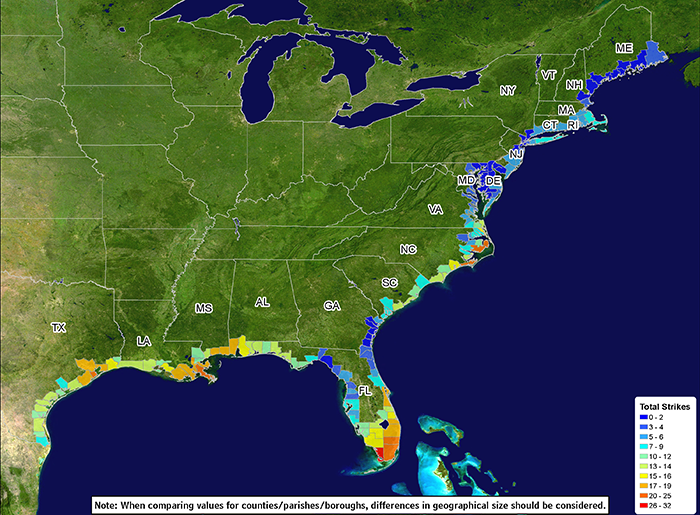Hurricane’s like Irma, Maria, and most recently Nate, are devastating families, businesses, and construction zones. In fact, since the 2008 Atlantic hurricane season there have been a record number of consecutive storms, according to the National Oceanic and Atmospheric Administration’s (NOAA).
In an effort to minimize the devastation created by these tropical storms, states like Florida and Texas are changing building codes and their stringent product approval requirements. The Federal Emergency Management Agency also continues it’s efforts, using things like mitigation assessment teams to study property damage and gain knowledge on the best and most current building practices.
Jack D. Burleson, AIA, CSI, CBO, a regional manager for government relations with the International Code Council (ICC) in the Texas field office said “The combination of high winds, huge waves, and storm surges in hurricane events makes resistance to wind and water the principal area of concern. Secondarily, a building’s structural system must be protected from corrosion, decay, and termites to give it a fighting chance against these forces.”
According to Tom Smith, AIA, TLSmith Consulting, Rockton, Ill most damage caused by hurricane winds and rain occur when building elements are compromised as a result of improper design, application, material deterioration, or roof system abuse. Dr. Leighton Cochran, a consultant at an engineering firm that specializes in wind, agrees with him.
Cochran explains that the pressure created on a building’s external surface increases with the square of the wind speed. The building product specification and design must be able to withstand such pressures as well as flying debris caused by winds.
How do you prepare for hurricane damage?
Hurricanes are unpredictable storms so it’s nearly impossible to prepare for everything that might happen during one. PlanSwift recommends to make sure you insure everything to prevent further loss on projects. Visit the LAGC Construction Site Hurricane Preparedness Plan for detailed information on how to prepare for a hurricane.
James Lee Witt, director of FEMA during the Clinton administration and now a disaster-recovery consultant, said “If a building is sited in a 100-year floodplain, wind and flood insurance are imperative.” Witt estimates that every dollar spent on prevention could potentially save $3-$5 in future losses and maybe even more when business interruptions are taken into account.
Because of this Congress is now mandating that regulated and insured lenders require flood insurance on properties located on high-risk flooding zones.
How are new codes going to be enforced?
Building products in certain counties in Florida are tested by High-Velocity Hurricane Zone (HVHZ) program’s high standards of performance. The two main requirements are: laboratory-tested resistance for structural wind loads and an ISO-based production quality assurance program that is then audited and approved by a third party.
Miami-Dade County offers a user-friendly database of approved products that can be searched using parameters like material category, company name, and impact rating.
A number of other codes/standards are being addressed regarding the design requirements for high-wind zones. Like the American Society of Civil Engineers standard, ASCE 7 – Minimum Design Loads for Buildings and Other Structures is used to determine the wind loads on buildings. This takes into account the location, basic wind design and speed, the surrounding terrain, building use, shape and size, and the location of components within a building envelope.

